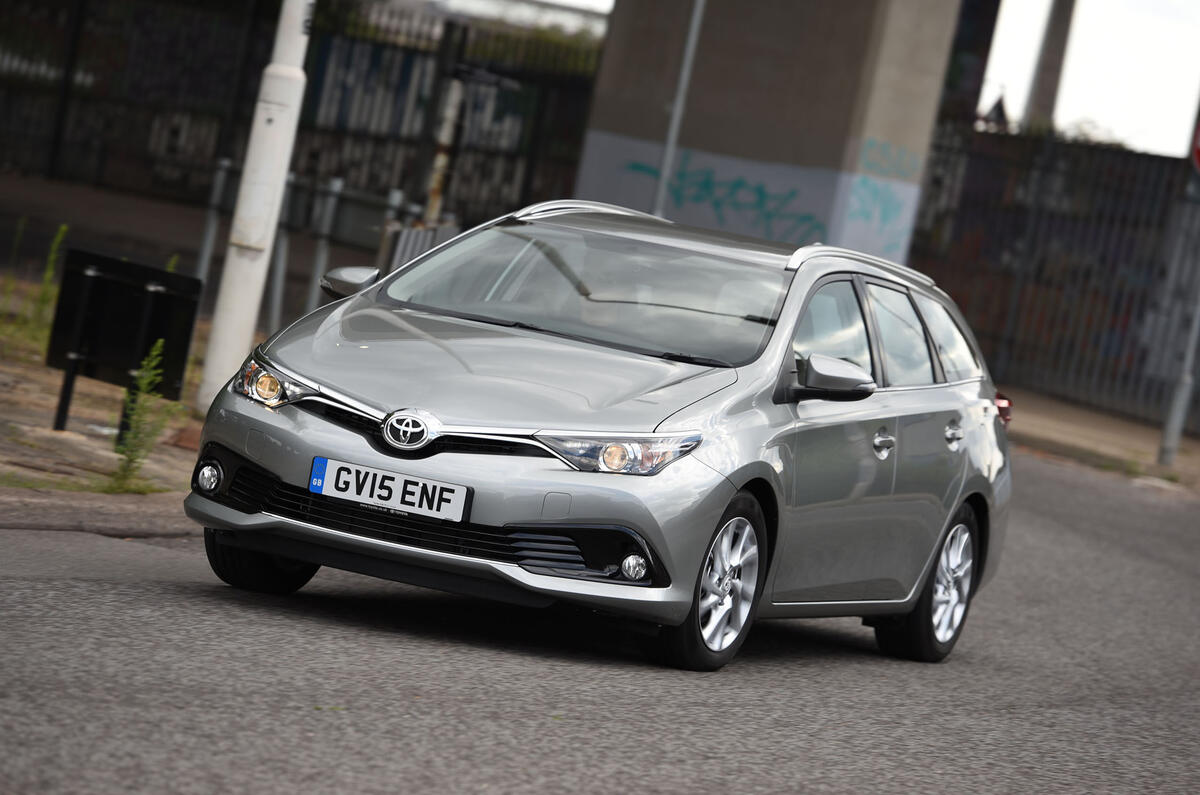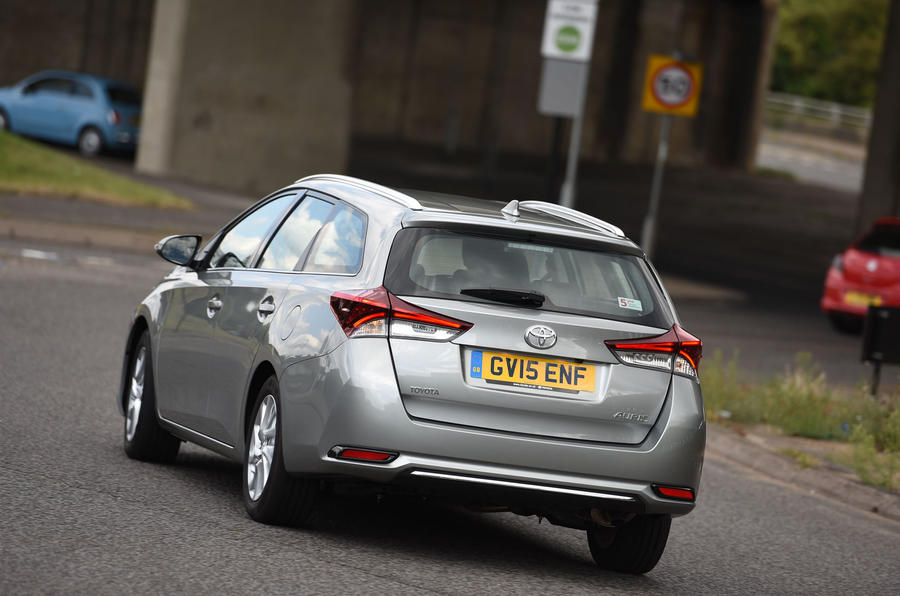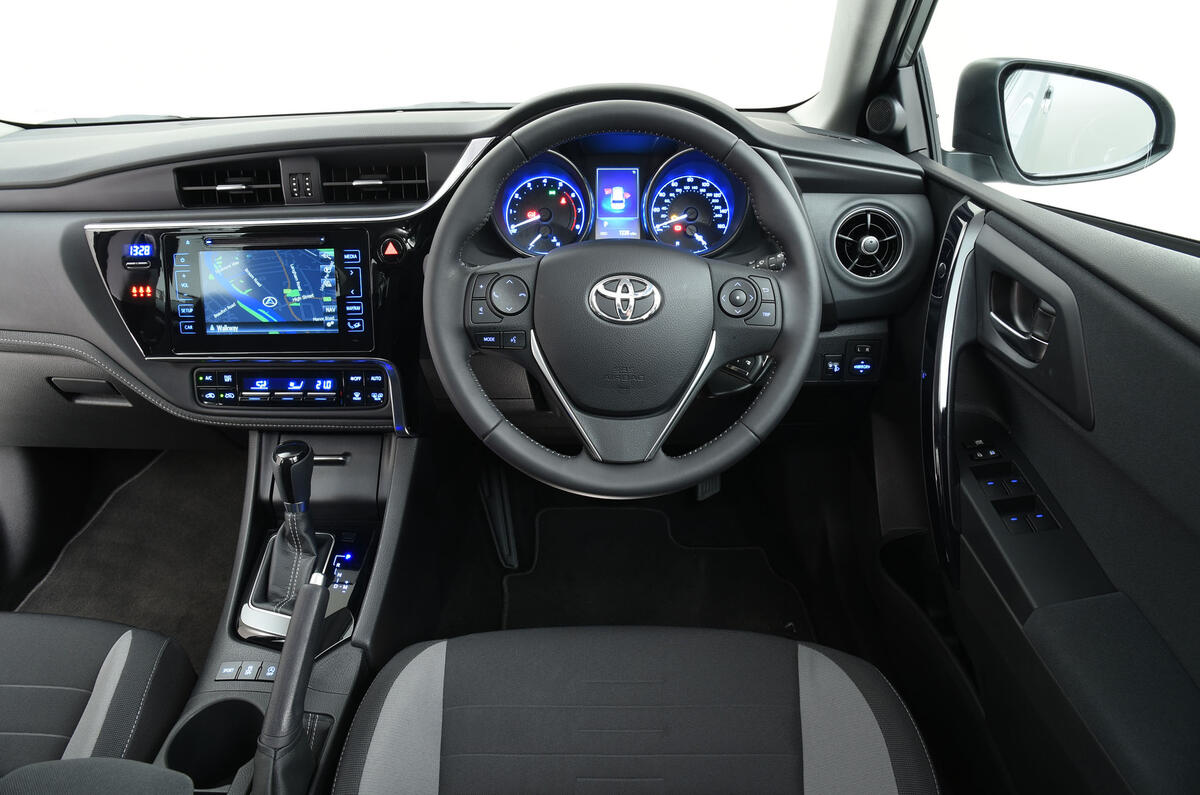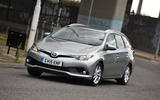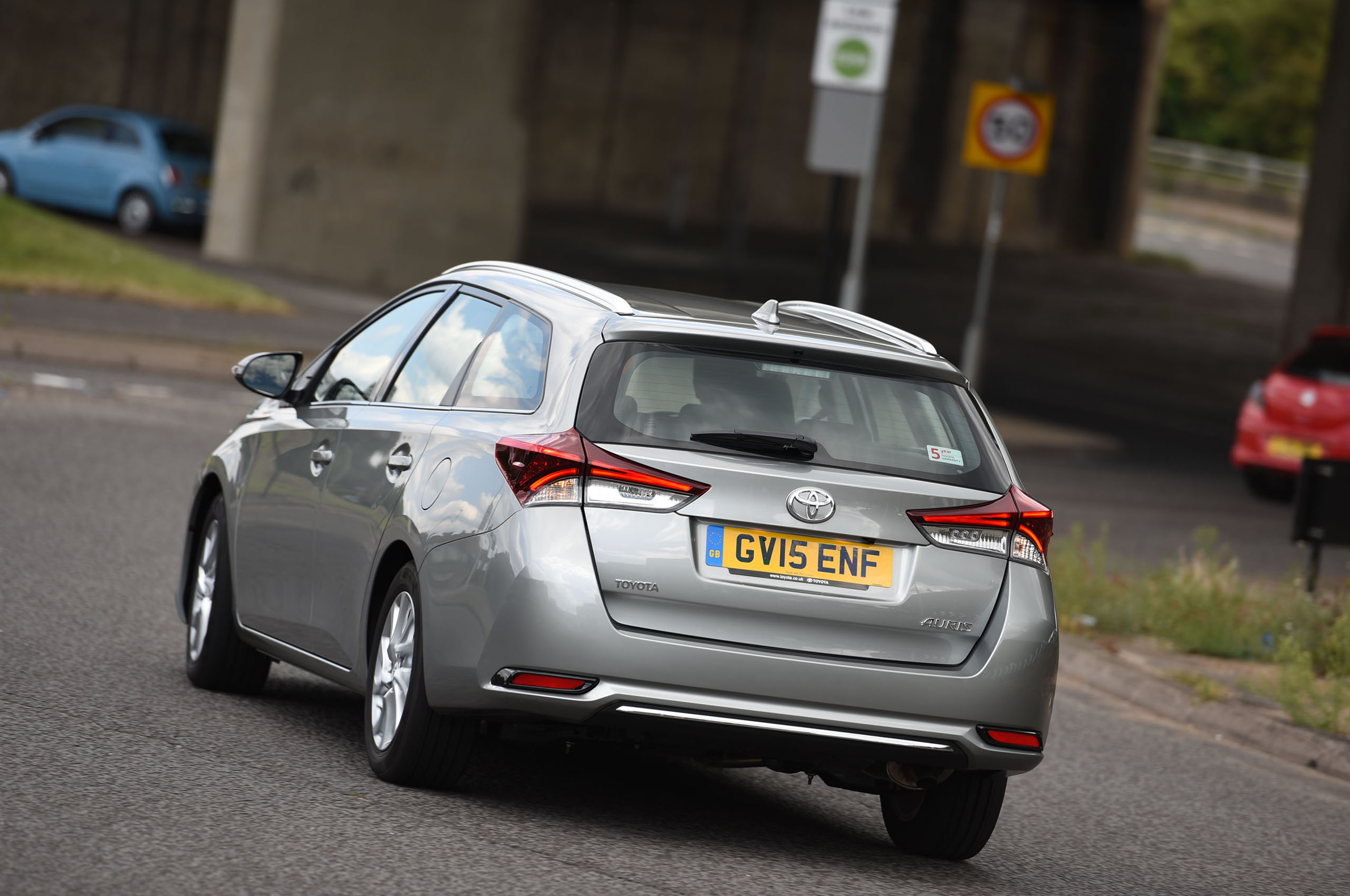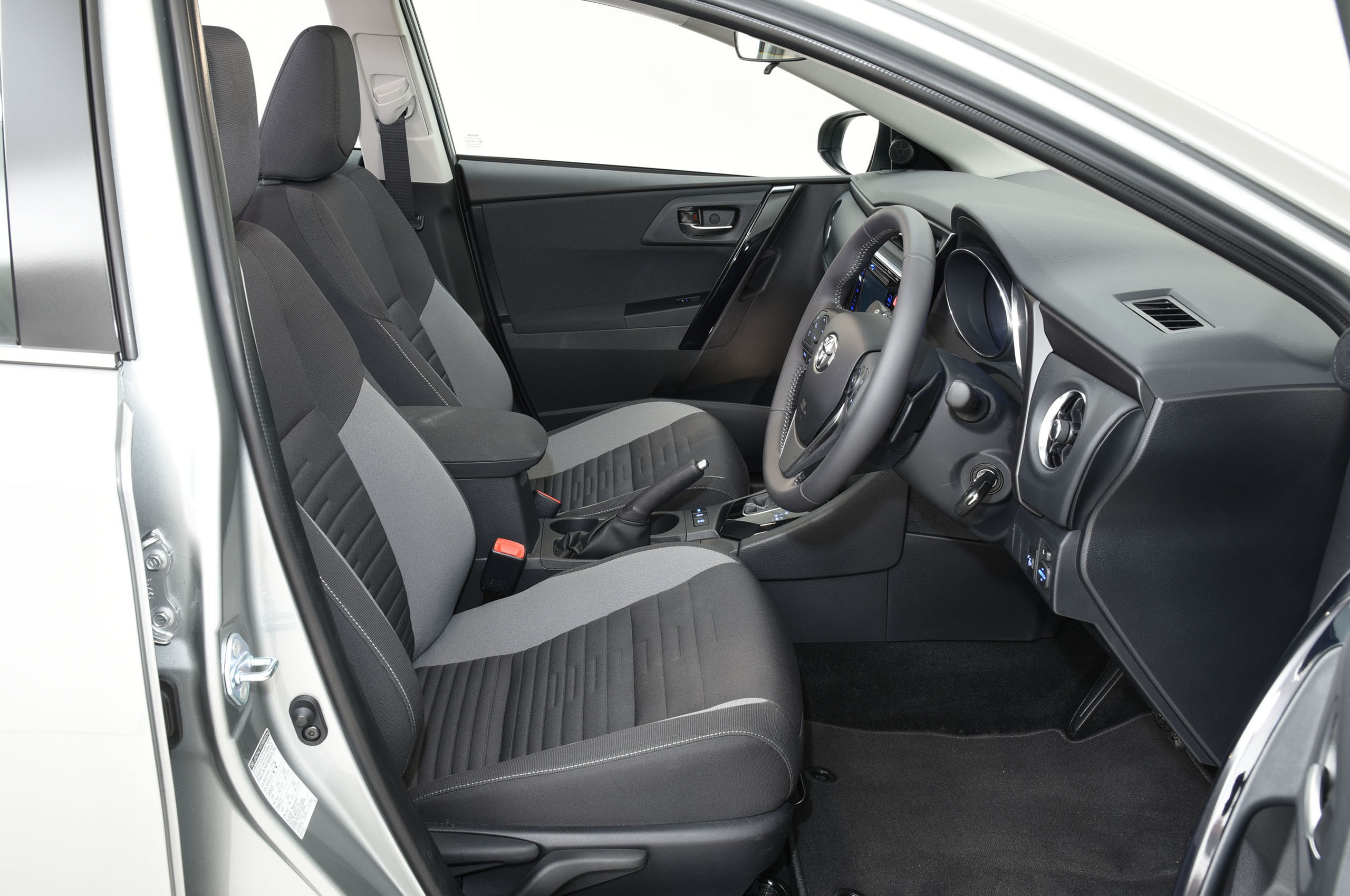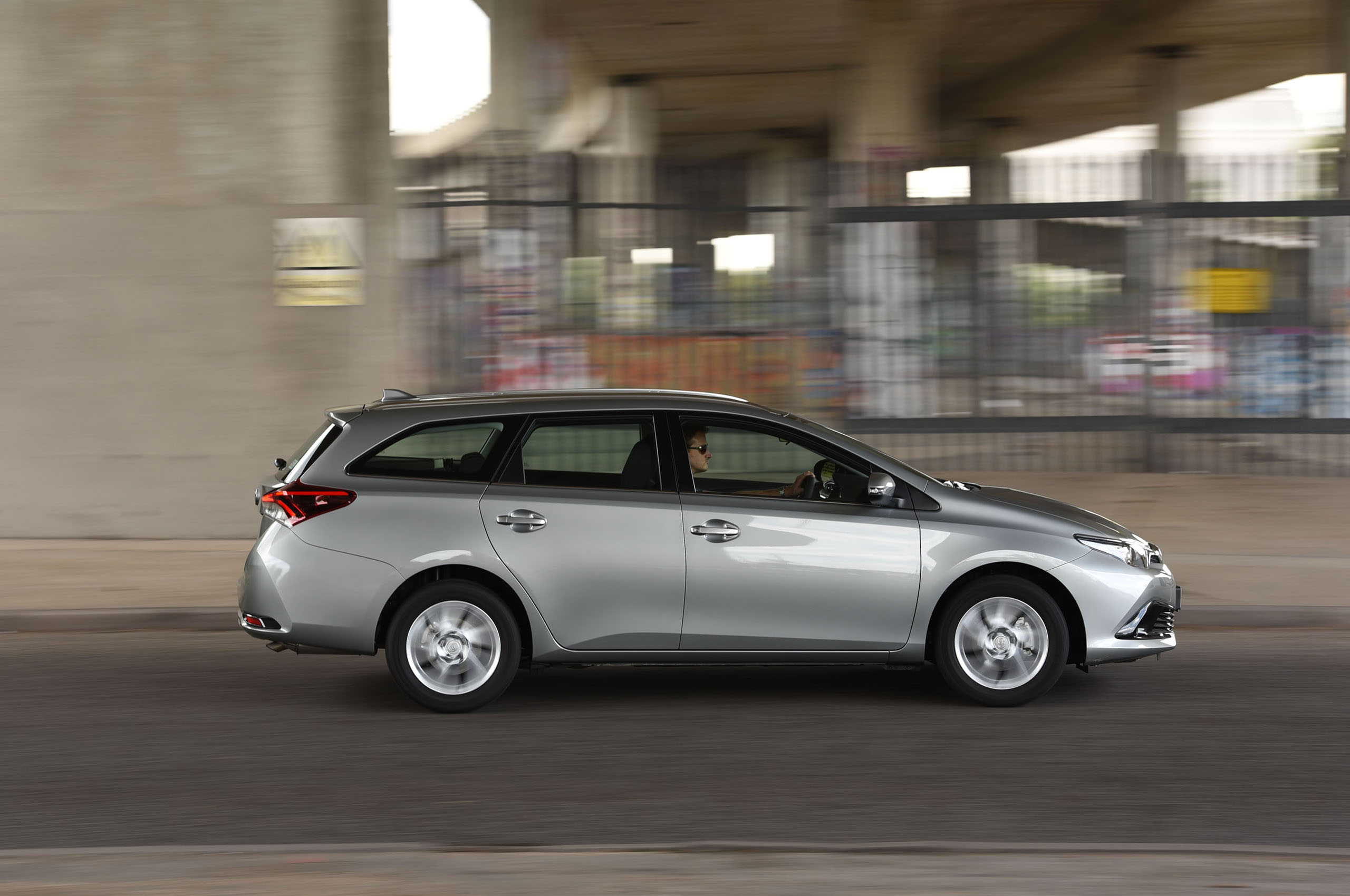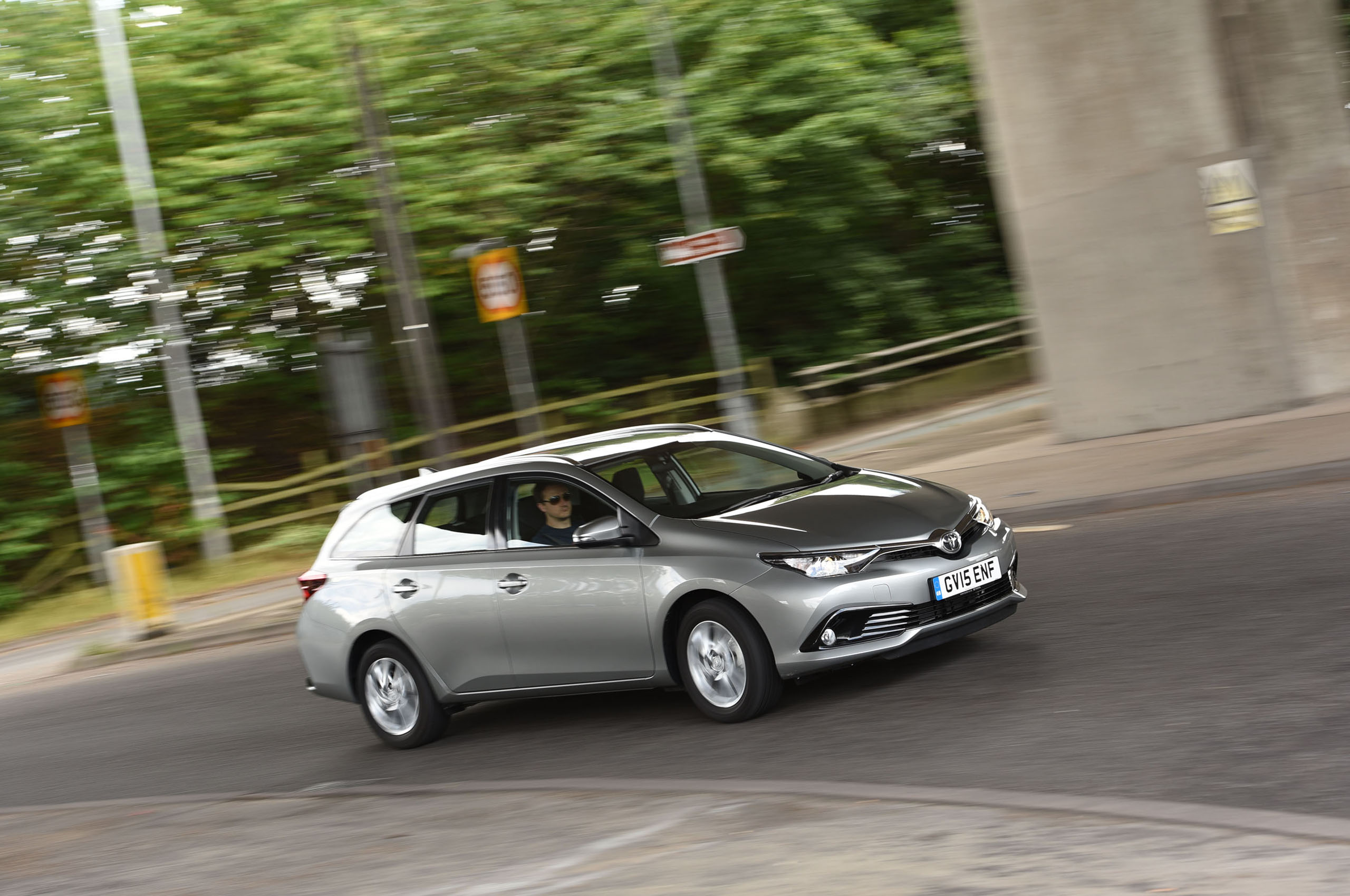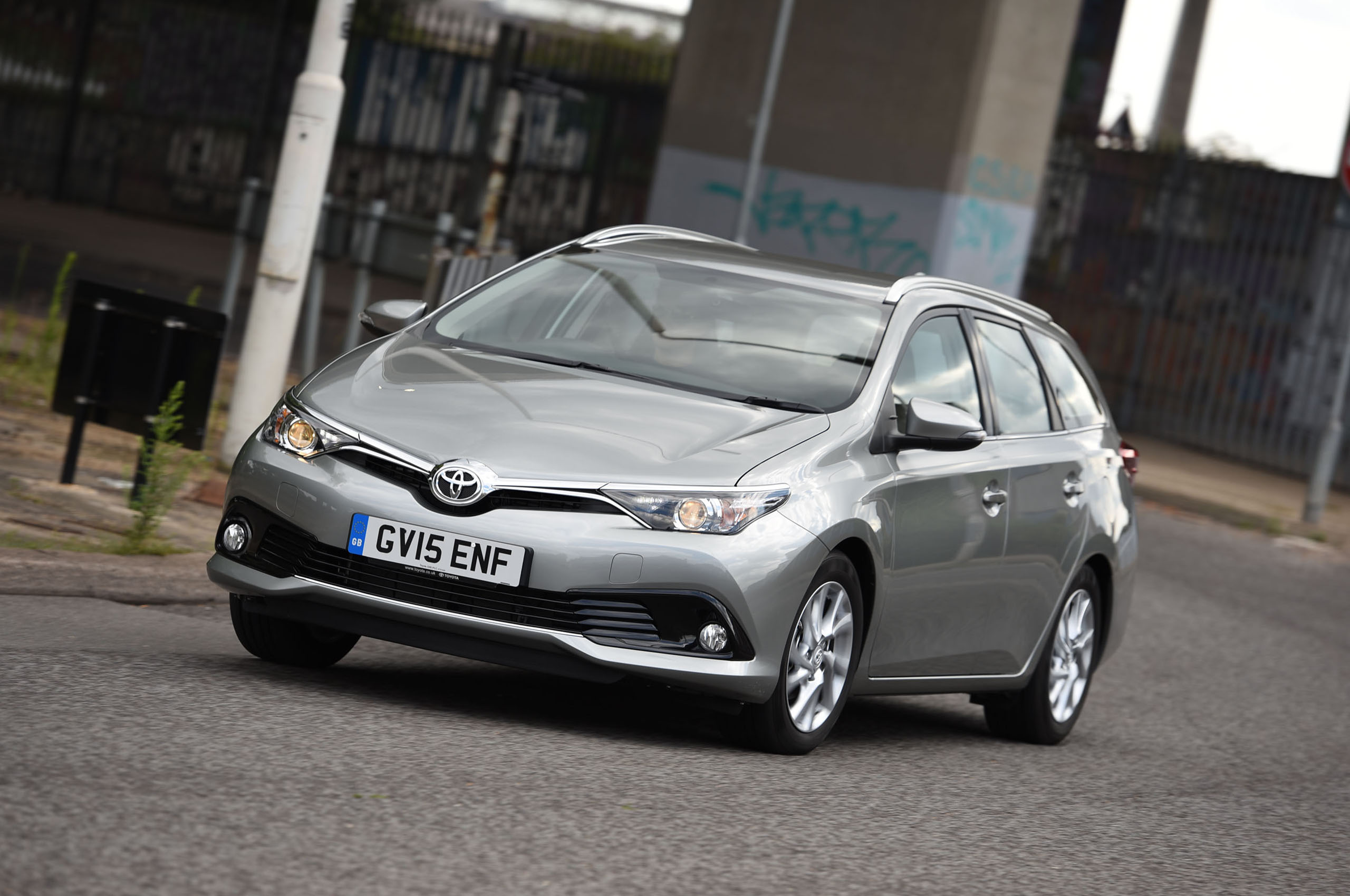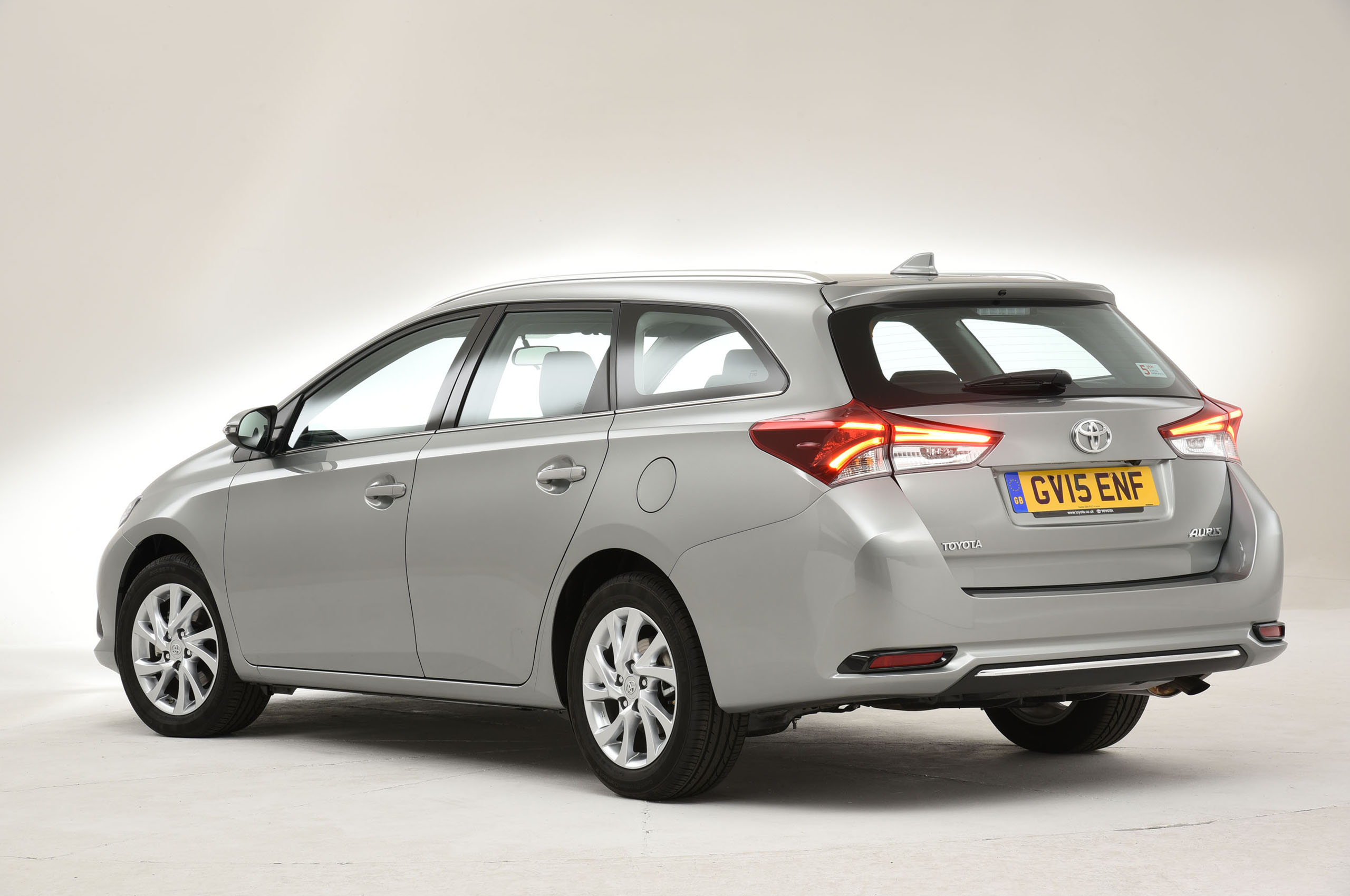Trim levels include Active, Icon, Business Edition, Design and Excel. Entry-level models get 15in steel wheels, climate control and USB connectivity as standard, while hybrid models get keyless start and alloy wheels. Upgrade to the mid-range Icon model and you'll find 16in alloy wheels, front foglights, electric windows, a reversing camera, and Toyota's Touch 2 infotainment system complete with DAB radio and Bluetooth.
The fleet-friendly Business Edition trim adds luxuries such as sat nav, cruise control, electrically adjustable lumbar support and heated front seats to the Auris, while the Design trim adorns the estate with 17in alloy wheels, Alcantara-clad sports seats and tinted rear windows.
The range-topping Excel trim includes sat nav, LED headlights, dual-zone climate control, part-leather and part Alcantara upholstery, parking sensors, folding door mirrors and automatic wipers to a compelling package.
Chances are that you don’t go for a Toyota estate if you’re looking for vast levels of interior flair, touchy-feely surfaces and what the layman would call ‘high quality’. Toyota thinks of quality differently.
If it makes the same component the same way a million times, that’s quality, and that’s the sort of approach that lends you an interior like the Toyota Auris Tourer’s.
There are more than a few hard surfaces around, while the LCD clock that could have come from the mid-1990s and the illuminated sign that shows how many seatbelts are clicked up look like add-ons of a style that you wouldn’t find in a Volkswagen Golf.
But the cabin is not totally without interest. Some of the silvered plastic highlights add a certain something, there’s the odd Lexus LFA-like swoosh and, by and large, things are pretty good ergonomically.
Some of our testers would have preferred a steering wheel that extends closer to the driver, but space is plentiful in the front, while adults will find it just as easy to get accommodated in the rear as in any other C-segment car.
The boot, meanwhile, is particularly impressive. Because the Auris Touring Sports’ 285mm of extra length over the hatchback has gone behind the rear seats, it makes the boot a 530-litre affair with the simple split-fold seats in place, and that rises to 1658 litres with the seats folded.
On hybrid models the battery is stored beneath the rear seats, rather than directly beneath the boot floor, the result being that boot space isn’t compromised in the way that it is in a lot of hybrids and range-extender EVs.
There’s plenty of storage space all round the car, to be fair: loads of cubbyholes and three 12V sockets. The Toyota Auris is that sort of car.
Six speakers are standard, as is DAB audio on Icon models and up. It is not the most intuitive set-up, but it’s simple enough once the presets are plumbed in. Sound quality is respectable for this kind of car, at this kind of price. It also reads from an aux-in device with simplicity and streams Bluetooth audio just as readily.
Bluetooth is standard on everything above the base Active car. All of our testers found that their different brands of phone connected easily and downloaded contacts and call lists quickly. The quiet ride helps audibility.
Sat-nav, available as standard on the top model, works just dandily, but the screen could be bigger and of a slightly higher resolution. A reversing camera is standard on Excel models, but it, too, would be better if it worked through a bigger screen. Thankfully, the Touch&GoPro dealer-fit system offers exactly that.



